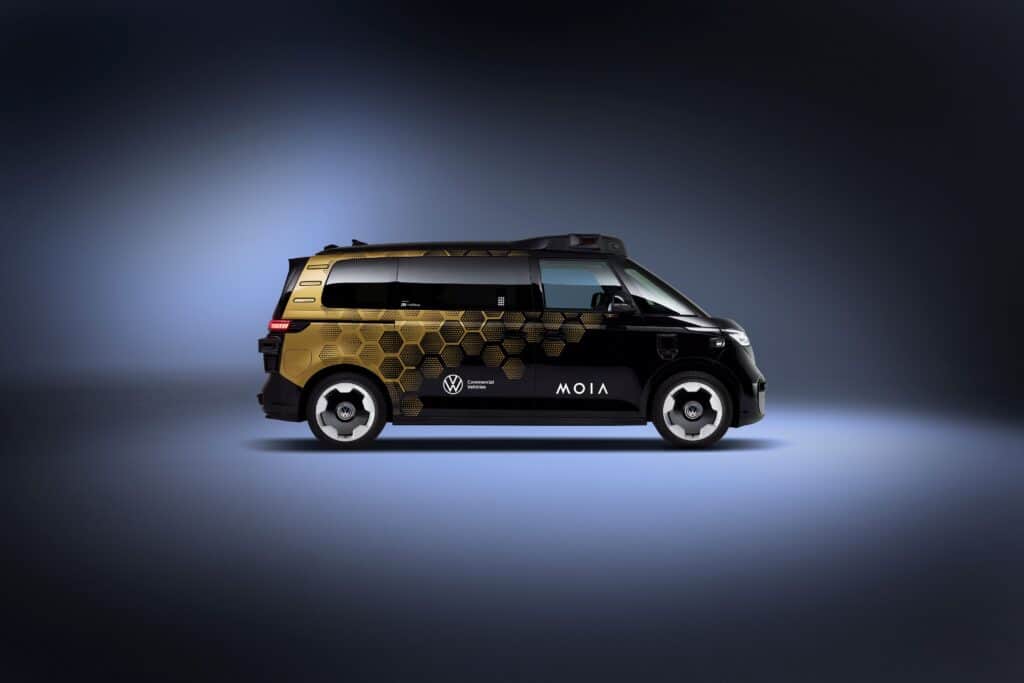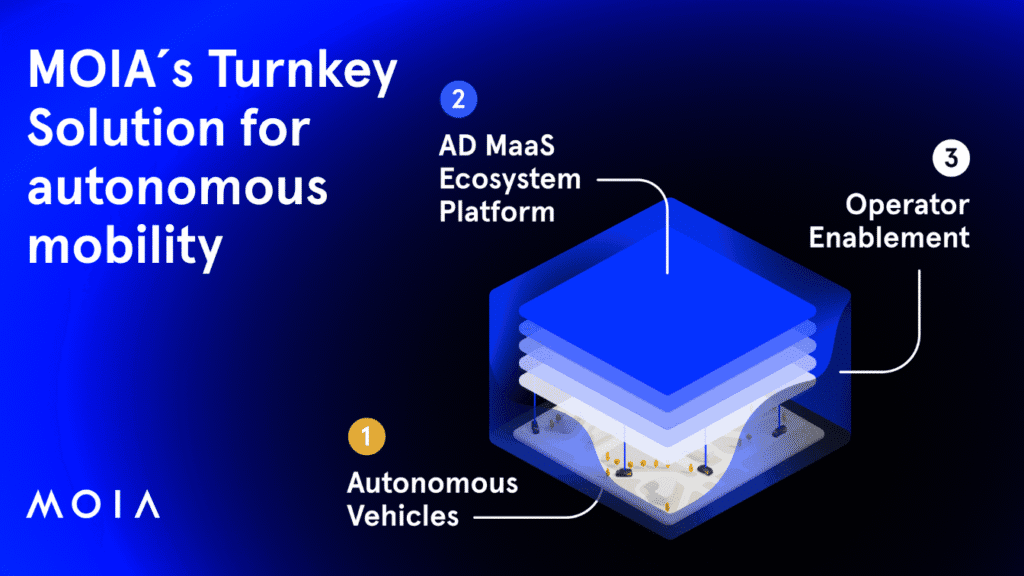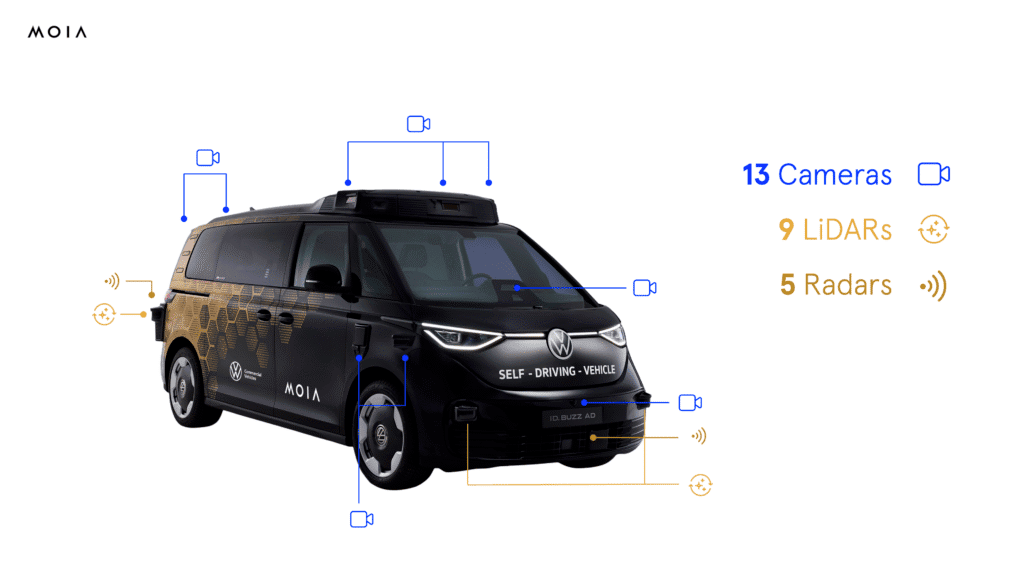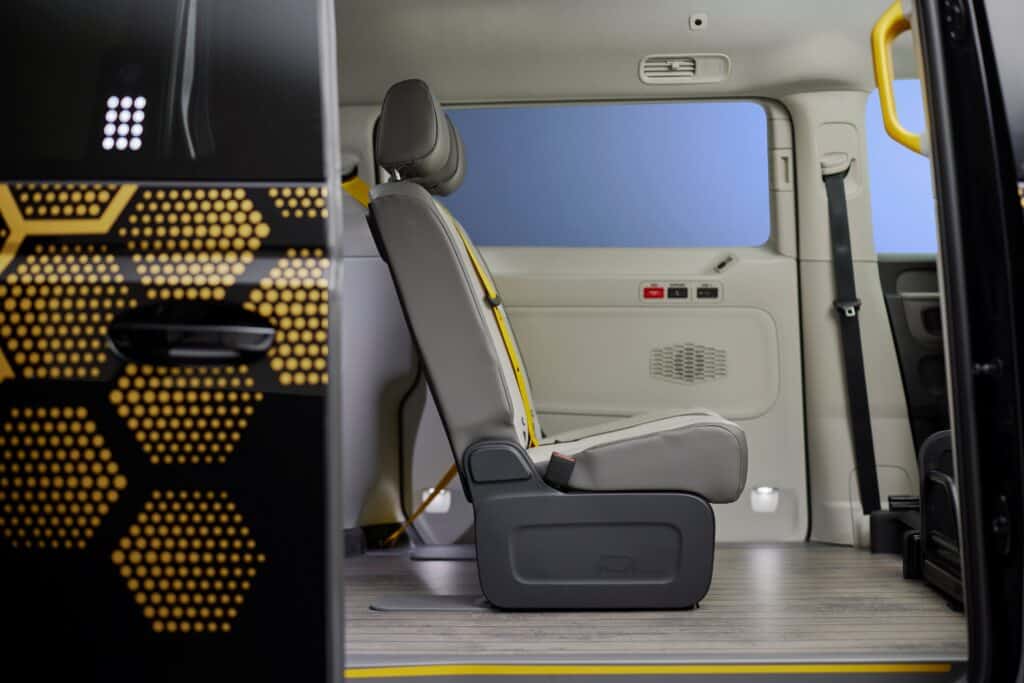The autonomous vehicle arms race just shifted gears—and Volkswagen is leading the charge with its bold, sensor-stacked ID. Buzz robotaxi.
In the swirling contest of self-driving tech, where Tesla’s Cybercab has long teased a futuristic reality, Volkswagen’s ID. Buzz is quietly and confidently becoming the real-world contender. This retro-inspired, forward-looking engineered vehicle, specifically for autonomous ride services, may hit the streets globally by 2026, and in some cases, even earlier.

Unlike Tesla’s polarizing robotaxi concept, which remains confined to geofenced test zones in Austin, Volkswagen’s approach is broader, more calculated, and arguably more humane. Developed by MOIA, VW’s mobility services arm, the ID. Buzz AD is not just another car with software—it’s an entire mobility ecosystem, fine-tuned for real cities, real roads, and real humans.
Engineered for Empathy, Built for Autonomy
Step inside the ID. Buzz and you’ll discover it’s not just about autonomy—it’s about understanding the unpredictable. With 27 perception sensors (13 cameras, 9 LiDARs, and 5 radars), the Buzz absorbs a staggering five gigabytes of data per second. This data is funneled into Mobileye’s EyeQ6H chip, providing 360° awareness and Level 4 autonomy.



This means it not only navigates complex traffic but also responds gracefully to unexpected scenarios, like a jaywalking cyclist or a child darting between cars. In one test in Hamburg, the Buzz gently yielded to a cyclist crossing illegally, choosing caution over aggression. As Christian Senger, CEO of MOIA, puts it:
“We allow for the mistakes of others.”
Where competitors chase perfect code, Volkswagen emphasizes robotic empathy—a human-aware driving logic many rivals overlook.
Uber and VW: A Powerful Alliance for the Streets of L.A.
In the U.S., the ID. Buzz will first debut in Los Angeles in 2026, through a significant partnership with Uber. Unlike Uber’s Route Share pilot programs, this fleet will offer true go-anywhere, shared autonomy—think public transport flexibility, without the bus timetable.

Passengers will access the service through Uber’s app, with features like NFC keyless entry, emergency stop buttons, and AI-powered safety monitoring. The cabin? Think function-first: wipe-clean floors, a luggage rack in place of the front seat, and space-maximizing interiors. Late-night ride? Solo options are available, particularly for vulnerable passengers, backed by remote monitoring and live support.
An Off-the-Shelf Robotaxi Revolution
Perhaps the ID. Buzz’s greatest strength isn’t its tech—it’s its plug-and-play platform. With Mobileye’s software stack, VW offers cities, operators, and transit providers a complete, ready-to-launch robotaxi system. No need for multi-billion-dollar R&D budgets. Any fleet operator can deploy Buzz vans with simulation training, backend tools, ride-hailing integration, and real-time analytics.




It’s a robotaxi in a box—and it might just open the floodgates.
A Different Kind of Competition
While Tesla’s Cybercab isn’t expected until 2027, and Waymo still faces safety controversies, Volkswagen is avoiding the hype machine and focusing on real-world reliability.
Waymo recently came under fire after a cyclist was injured by a passenger opening a door, prompting criticism of its “Safe Exit” system. Tesla, meanwhile, has been accused of overpromising and underdelivering with its Full Self-Driving suite, with critics calling it “a dangerous demo” rather than true autonomy.
Volkswagen? It’s measuring success not by miles logged without intervention, but by how well it coexists with humans on the road.
What’s Next?
The ID. Buzz robotaxi isn’t just a vehicle—it’s a harbinger of what autonomy should look like: inclusive, city-integrated, and mindful. With full-scale rollouts expected across Europe and the U.S. by 2026, and Hamburg already preparing to integrate the Buzz into its public transit system, VW may quietly do what others have only promised—bring autonomy to life.
One thing’s clear: while others race to be first, Volkswagen is focused on getting it right.
For more information, visit MOIA.
👉 Please 📩SUBSCRIBE to us for more real-world EV analysis, news, and deep dives — written for EV fans by EV fans. It’s FREE!
Hey, I’m Badal! I’m super passionate about cars—especially electric ones. Whether it’s EVs, electric trucks, bikes, or anything with a battery and wheels, I’m all in. I love writing blogs and articles that break things down for fellow enthusiasts and curious readers alike. Hope you enjoy the ride as much as I do! Enjoyed reading? You can buy me a coffee on PayPal ☕ → paypal.me/BadalBanjare
